How to Show Percentages in Stacked Column Chart in Excel?
Last Updated :
17 Dec, 2021
In this article, you will learn how to create a stacked column chart in excel. Show percentages instead of actual data values on chart data labels.
By default, the data labels are shown in the form of chart data Value (Image 1). But very often user needs to plot charts with actual data and show percentages/custom values on the chart instead of default data. For that we have an option “Value From Cells” in chart “Format Data Label” (Image 2) to select a custom range.
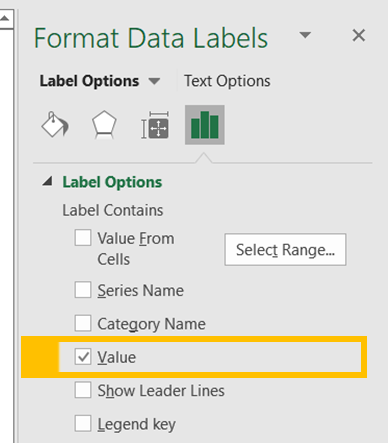
Image 1
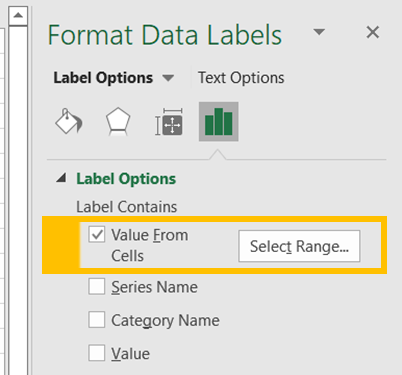
Image 2
Implementation:
Follow the below steps to show percentages in stacked column chart In Excel:
Step 1: Open excel and create a data table as below
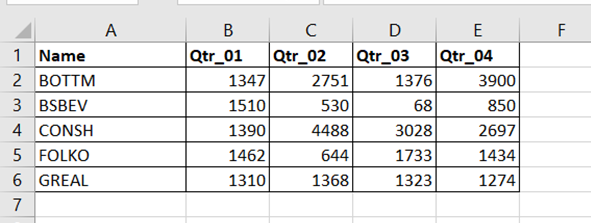
Step 2: Select the entire data table.
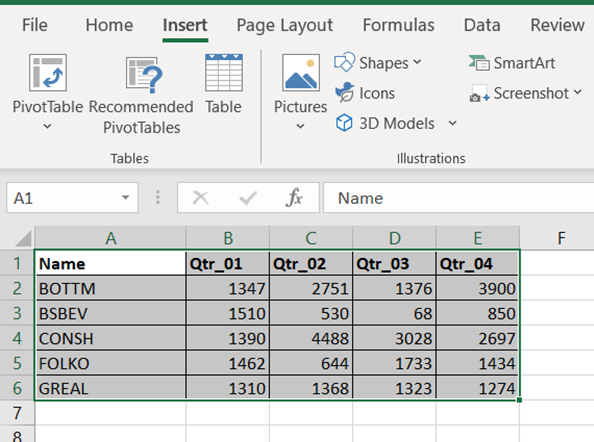
Step 3: To create a column chart in excel for your data table. Go to “Insert” >> “Column or Bar Chart” >> Select Stacked Column Chart
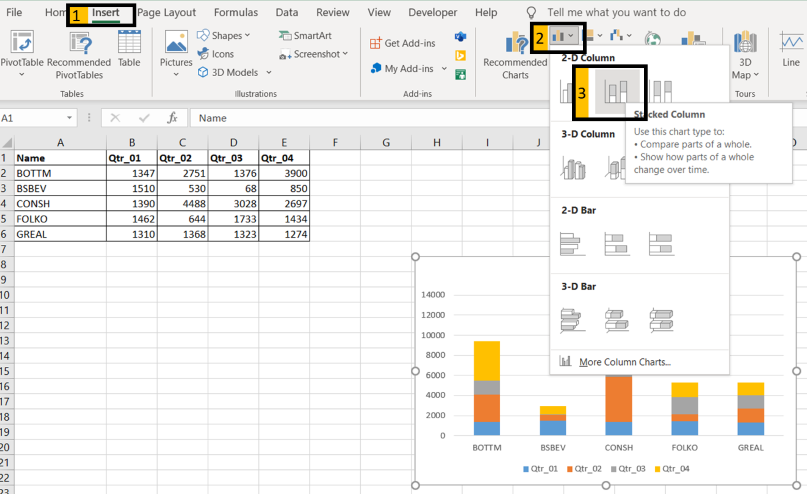
Step 4: Add Data labels to the chart. Goto “Chart Design” >> “Add Chart Element” >> “Data Labels” >> “Center”. You can see all your chart data are in Columns stacked bar.
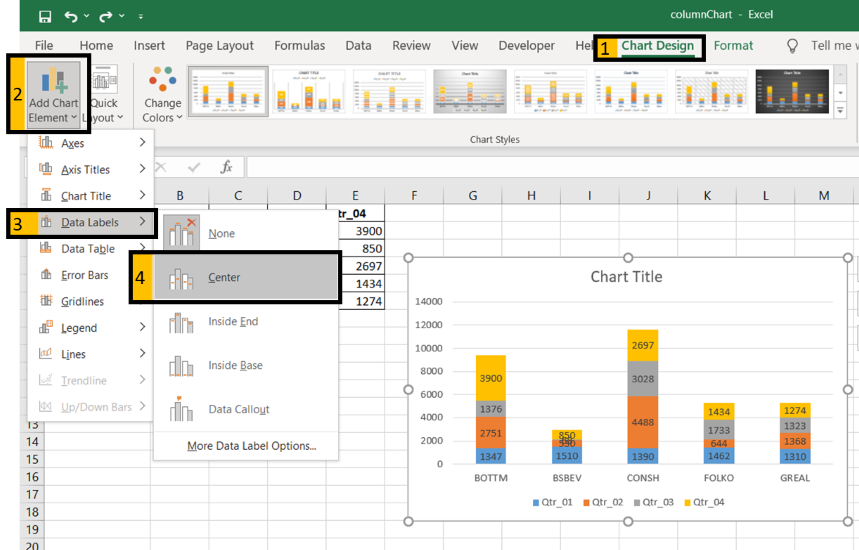
Step 5: Steps to add percentages/custom values in Chart.
- Create a percentage table for your chart data. Copy header text in cells “b1 to E1” to cells “G1 to J1”.
- Insert below formula in cell “G2”.
=B2/SUM($B2:$E2)– make sure the “$” symbol are placed in-front of the characters (B and E) in formula
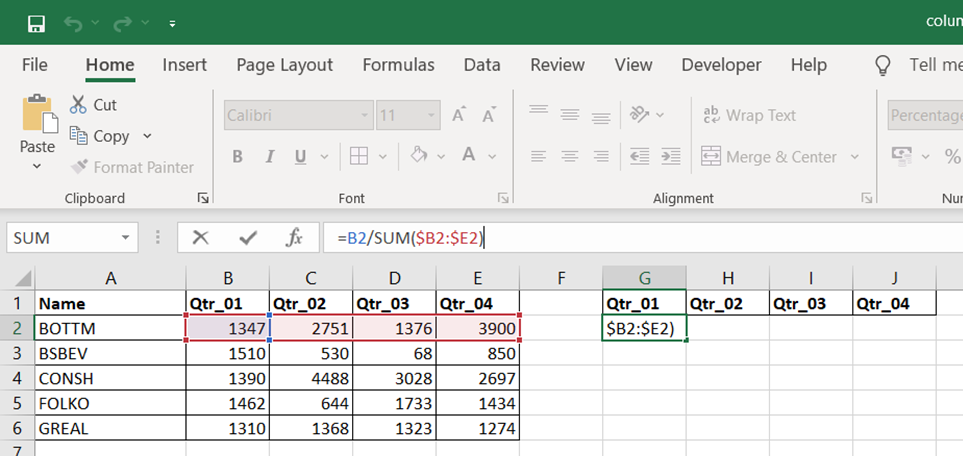
Step 6: Drag down/across the formula to fill cells G2:J6. Click Percent style (1) to convert your new table to show number with Percentage Symbol
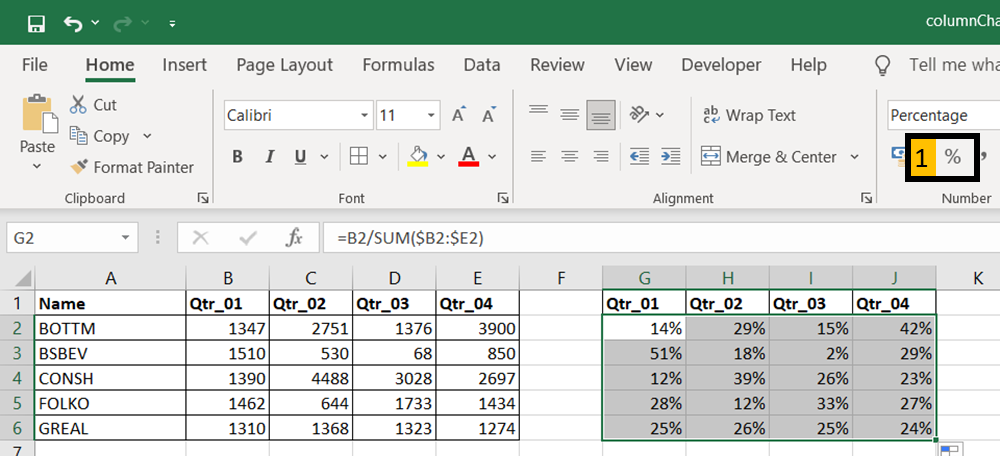
Step 7: Select chart data labels and right-click, then choose “Format Data Labels”.
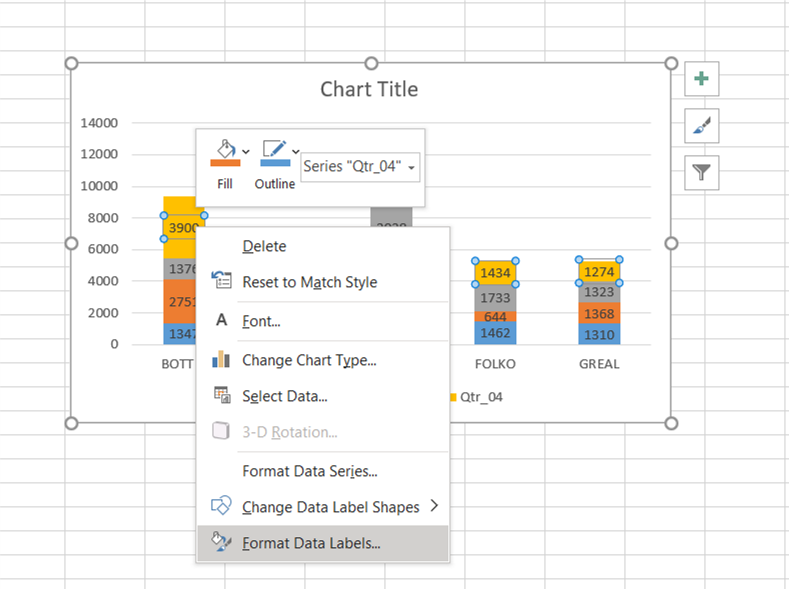
Step 8: Check “Values From Cells”.
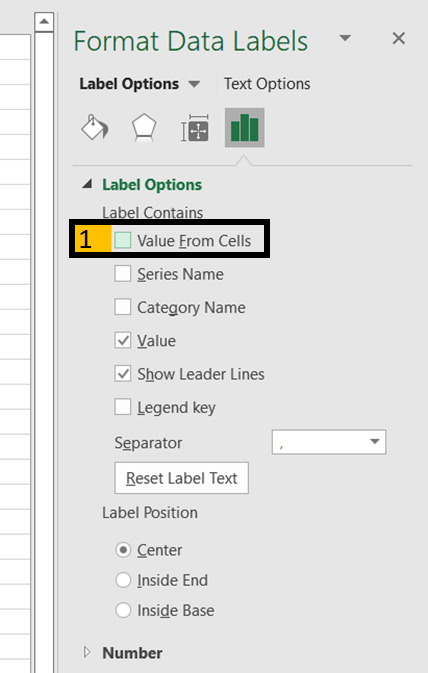
Step 9: Above step popup an input box for the user to select a range of cells to display on the chart instead of default values.
- In our example, Qtr_04 series default values are in E2:E6. But we select range J2:J6 to show respective percentages. Press “OK”
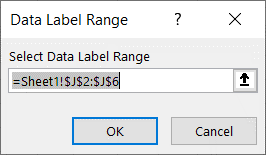
Step 10: Un-check “Value” to hide the actual value from the chart.
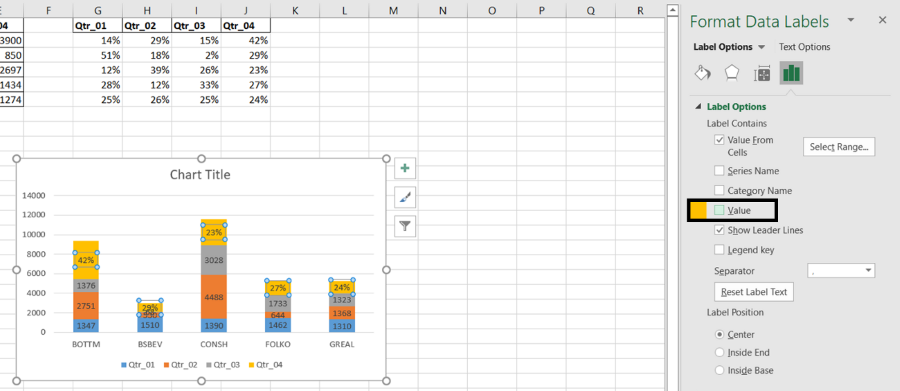
Step 11: Repeat steps 7 to 10 for each series of our data.
| Series |
Respective Range |
| Qtr_01 |
=Sheet1!$G$2:$G$3 |
| Qtr_02 |
=Sheet1!$H$2:$H$4 |
| Qtr_03 |
=Sheet1!$I$2:$I$5 |
| Qtr_04 |
=Sheet1!$J$2:$J$6 |
Output:
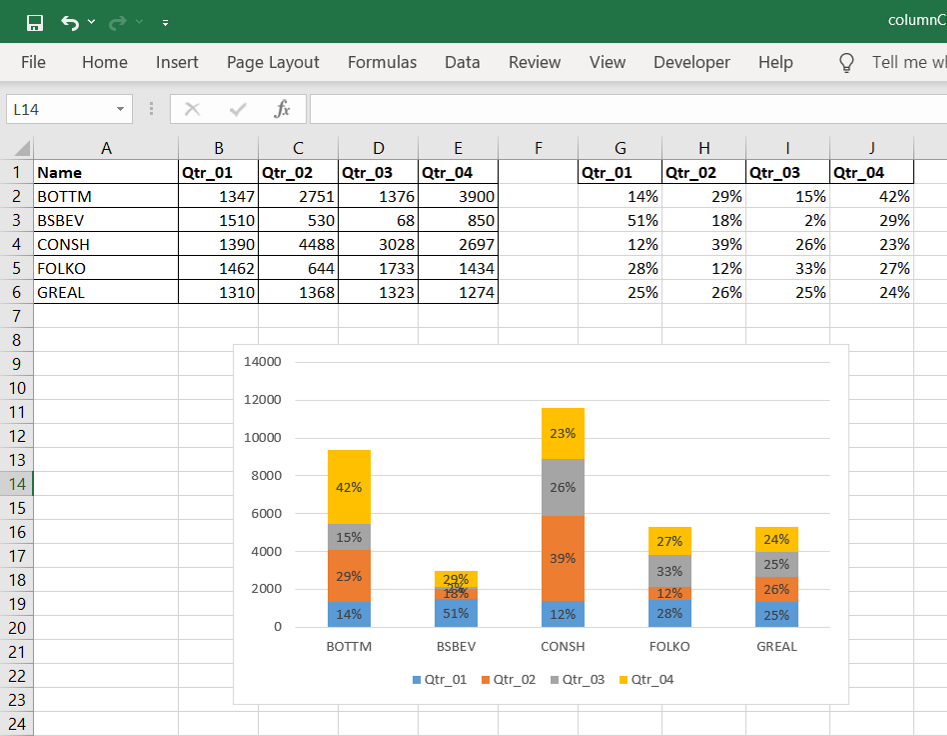
Like Article
Suggest improvement
Share your thoughts in the comments
Please Login to comment...